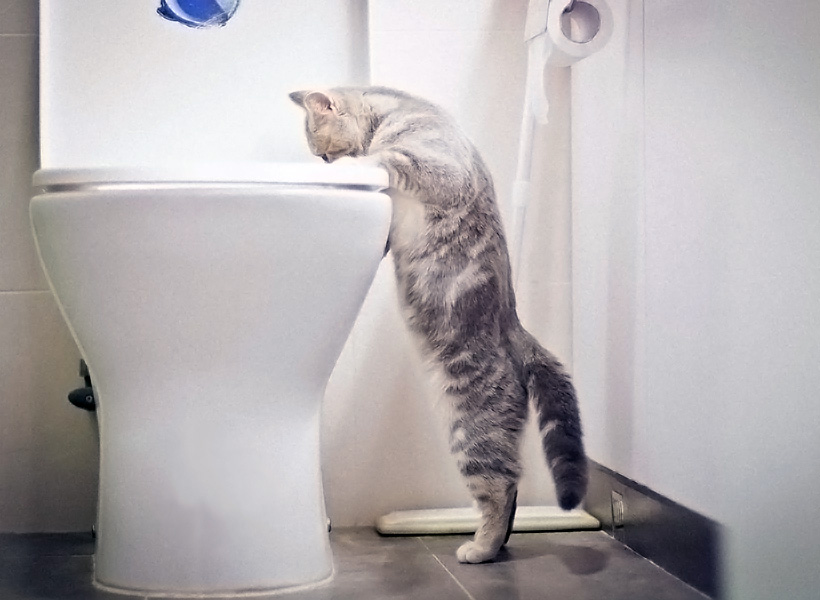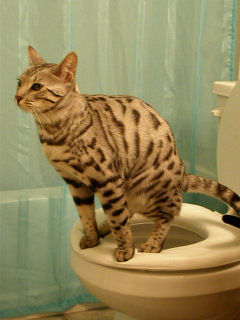The Risks of Animal Waste in the Toilet
The Risks of Animal Waste in the Toilet
Blog Article
They are making a number of great pointers relating to Should you flush animal waste down the toilet overall in this content down the page.

When it pertains to disposing of waste, particularly animal waste, many people usually resort to the practical option of flushing it down the toilet. Nonetheless, this seemingly simple remedy can have serious repercussions for the setting and public health. In this short article, we'll check out why flushing animal waste down the bathroom is a poor idea and provide alternative techniques for appropriate disposal.
Intro
Proper garbage disposal is vital for preserving ecological sustainability and public health. While it may seem safe to flush animal waste down the toilet, it can lead to various concerns, both for the setting and human wellness.
Risks of flushing pet waste
Environmental impact
Purging pet waste introduces harmful germs and pathogens into rivers, which can negatively influence water environments. These pathogens can pollute water resources and harm aquatic life, interfering with delicate communities.
Public health issues
Animal waste has harmful microorganisms such as E. coli and Salmonella, which can posture significant health and wellness risks to humans. Flushing pet waste down the toilet can infect water supplies, bring about the spread of conditions and infections.
Alternatives to flushing
Rather than purging animal waste down the commode, there are numerous different disposal methods that are much more environmentally friendly and hygienic.
Composting
Composting pet waste is an environmentally friendly way to deal with it. By website composting, organic matter is broken down into nutrient-rich dirt, which can be used to feed gardens and plants.
Garbage dump disposal
Throwing away animal waste in a land fill is another option. While not as eco-friendly as composting, it is a more secure alternative to flushing, as it protects against the contamination of water sources.
Family pet waste disposal systems
There are specialized family pet garbage disposal systems available that securely and hygienically get rid of animal waste. These systems often make use of enzymes to break down waste and remove odors.
Steps to appropriate animal waste disposal
To make certain proper disposal of pet waste, follow these actions:
Scooping and nabbing waste
Consistently scoop and bag animal waste making use of biodegradable bags. This protects against waste from contaminating the atmosphere.
Using marked waste bins
Dispose of bagged animal waste in assigned waste bins, such as compost containers or garbage dump bins. Prevent flushing it down the commode in any way prices.
Cleansing can and family pet locations frequently
Routinely clean litter boxes and animal locations to prevent the build-up of waste and microorganisms. Use pet-safe cleaning products to maintain health.
Advantages of appropriate disposal techniques
Taking on correct disposal approaches for animal waste offers a number of benefits:
Minimized environmental pollution
Proper disposal methods decrease the danger of environmental pollution, safeguarding rivers and ecological communities from contamination
Decreased risk of water contamination.
By preventing flushing pet waste down the commode, the threat of water contamination is considerably reduced, guarding public health.
Improved sanitation and hygiene
Appropriate disposal techniques promote better cleanliness and hygiene, creating a more secure setting for both people and animals.
Final thought
In conclusion, purging animal waste down the bathroom is harmful to the environment and public health. By taking on alternative disposal approaches and complying with proper waste administration practices, we can decrease the negative influence of pet waste and contribute to a cleaner, much healthier earth.
What To Do With Dog Poo – The Do's And Don'ts Of Disposing Of Faeces
Dog poo bins
Some councils provide dedicated dog waste bins in popular dog-walking areas that can take dog poo that has been bagged but you can legally dispose of dog waste in any public litter bin, as long as it is securely bagged. This also applies to your wheelie bin at home.
Do not flush
Water companies do not recommend flushing dog faeces down the toilet because certain parasites can survive the water processing treatment and are potentially harmful to humans. You should also never consider flushing dog poo that has been bagged down the toilet as the bags will not break down and instead create severe blockages in the sewage system.
In the woods
The Forestry Commission promotes a ‘stick and flick’ method for dealing with waste in the woods. This means finding a stick and using it to flick any poo from off the path so that it is out of the way of other walkers. You could also bury it as long as it is not in an area where there might be livestock.
Livestock
Parasites found in dog poo can be transmitted to livestock if they inadvertently eat infected faeces that has been left on grazing land. This could result in the death of sheep or abortion in cattle so you should always make sure you pick up your dog’s waste in fields where livestock could be present.

Routinely clean litter boxes and animal locations to prevent the build-up of waste and microorganisms. Use pet-safe cleaning products to maintain health.
Advantages of appropriate disposal techniques
Taking on correct disposal approaches for animal waste offers a number of benefits:
Minimized environmental pollution
Proper disposal methods decrease the danger of environmental pollution, safeguarding rivers and ecological communities from contamination
Decreased risk of water contamination.
By preventing flushing pet waste down the commode, the threat of water contamination is considerably reduced, guarding public health.
Improved sanitation and hygiene
Appropriate disposal techniques promote better cleanliness and hygiene, creating a more secure setting for both people and animals.
Final thought
In conclusion, purging animal waste down the bathroom is harmful to the environment and public health. By taking on alternative disposal approaches and complying with proper waste administration practices, we can decrease the negative influence of pet waste and contribute to a cleaner, much healthier earth.
What To Do With Dog Poo – The Do's And Don'ts Of Disposing Of Faeces
Dog poo bins
Some councils provide dedicated dog waste bins in popular dog-walking areas that can take dog poo that has been bagged but you can legally dispose of dog waste in any public litter bin, as long as it is securely bagged. This also applies to your wheelie bin at home.
Do not flush
Water companies do not recommend flushing dog faeces down the toilet because certain parasites can survive the water processing treatment and are potentially harmful to humans. You should also never consider flushing dog poo that has been bagged down the toilet as the bags will not break down and instead create severe blockages in the sewage system.
In the woods
The Forestry Commission promotes a ‘stick and flick’ method for dealing with waste in the woods. This means finding a stick and using it to flick any poo from off the path so that it is out of the way of other walkers. You could also bury it as long as it is not in an area where there might be livestock.
Livestock
Parasites found in dog poo can be transmitted to livestock if they inadvertently eat infected faeces that has been left on grazing land. This could result in the death of sheep or abortion in cattle so you should always make sure you pick up your dog’s waste in fields where livestock could be present.

I'm very inquisitive about and I really hope you liked my blog posting. Do you know another individual who is excited about the topic? Please feel free to promote it. We value your readership.
Schedule Service Now Report this page